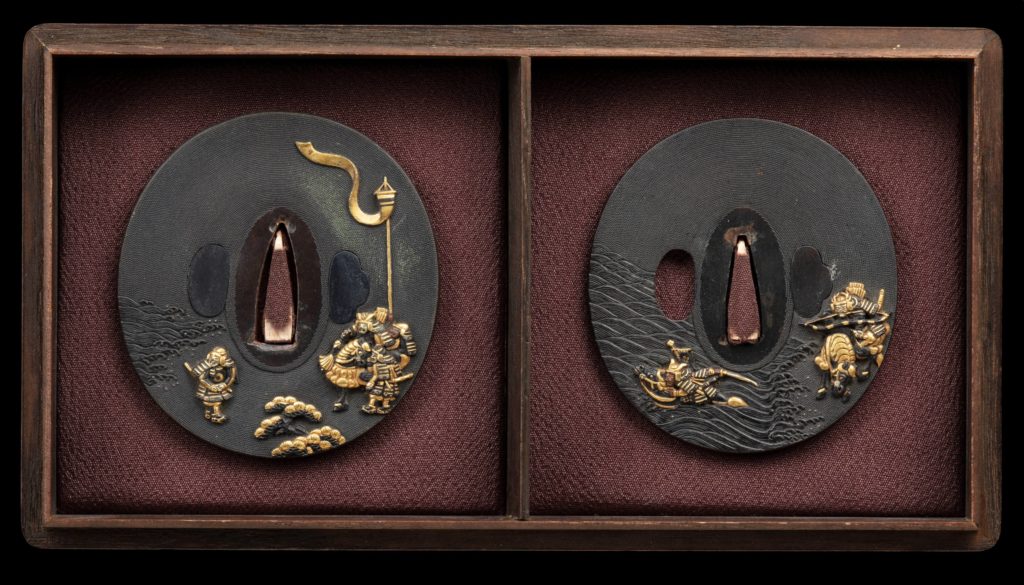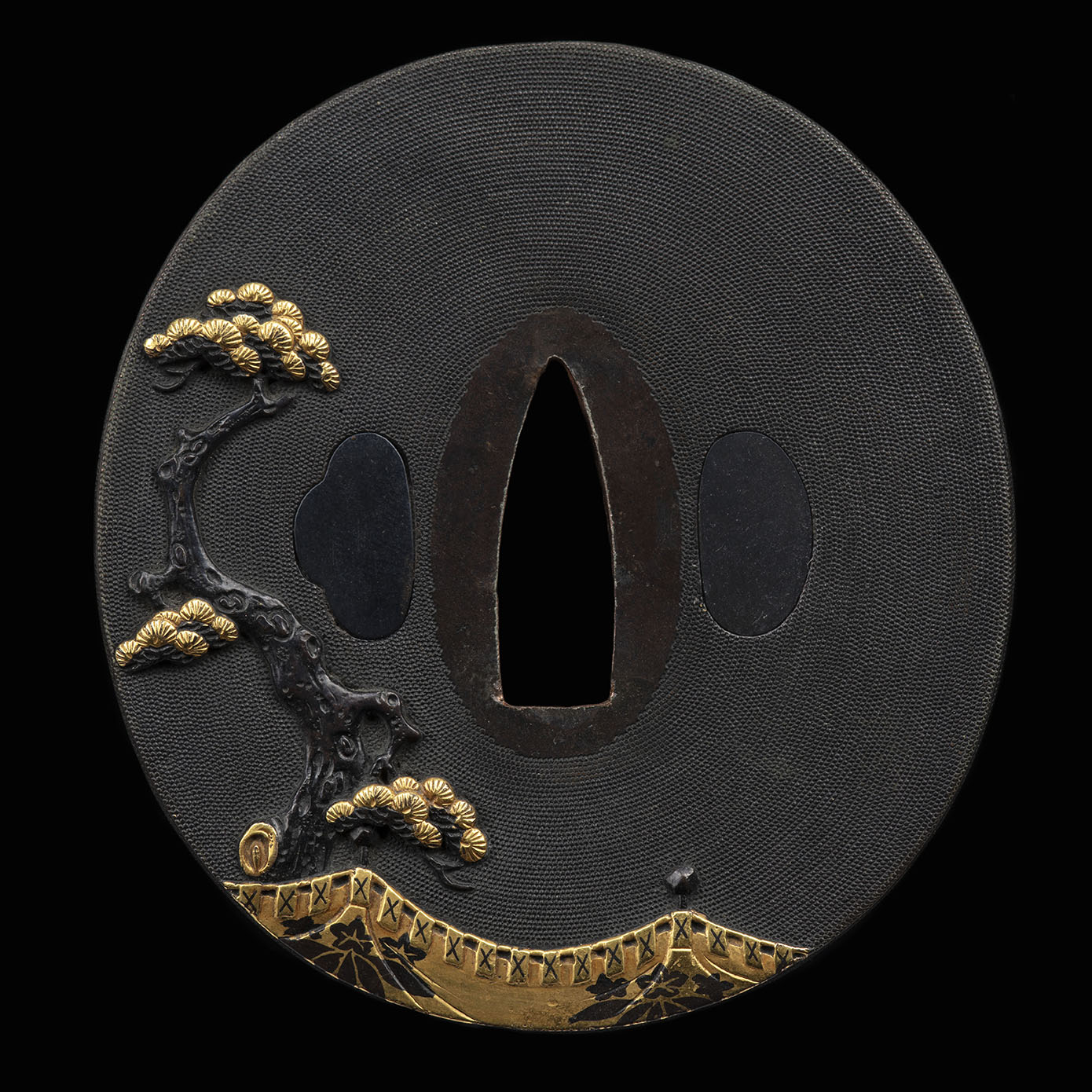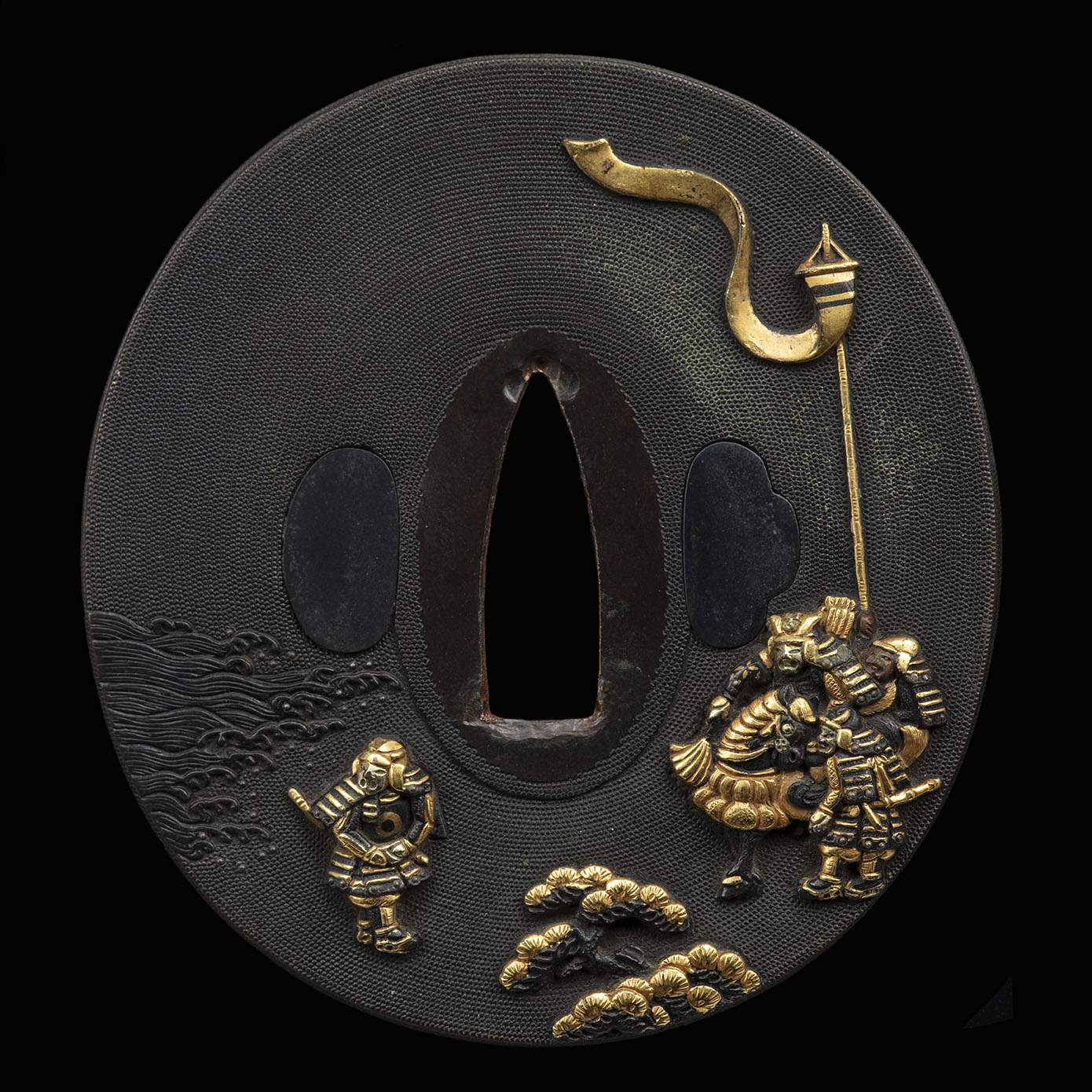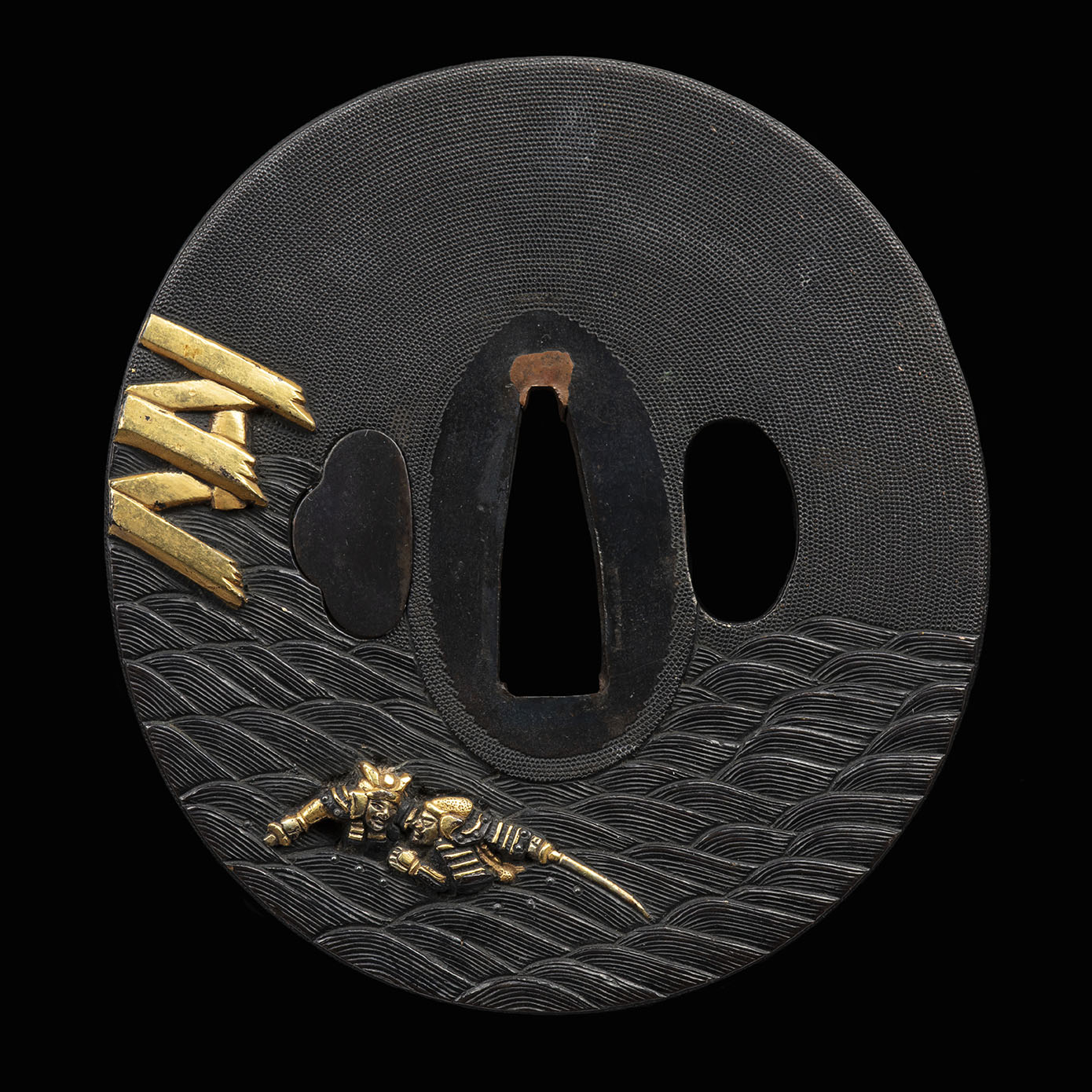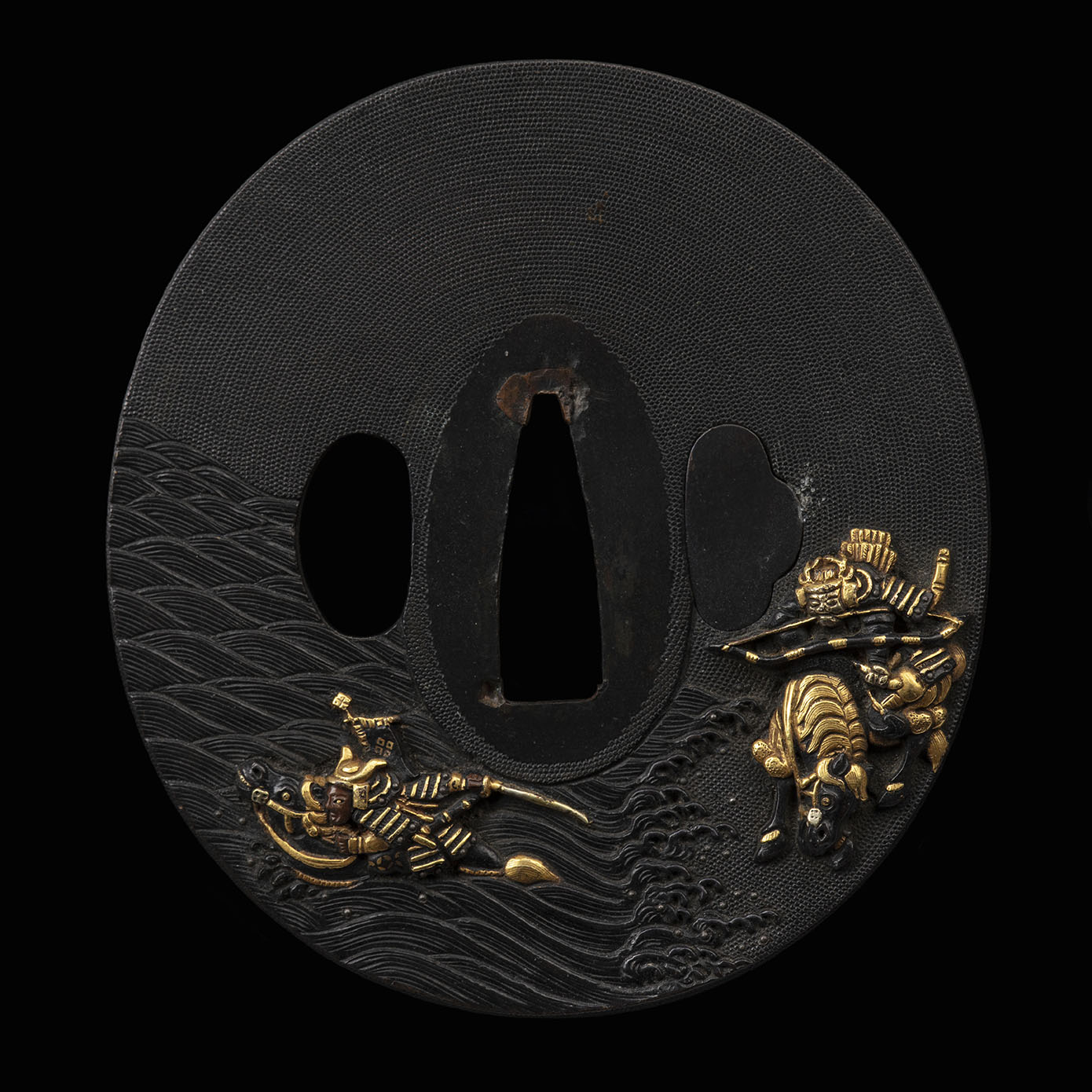“Race to Cross Ujikawa”
Kyo-Kinko Daisho Tsuba Set
“Kyo-Kinko” is a general citation or attribution to the metal craftsman located in and around the Kyoto area, with no particular inclination to a school or individual maker. The stylistic workmanship is provincially characteristic of the “Kyo” region. Kyoto was the seat of Imperial rulership for centuries and long has been regarded as the cultural heart of all Japan. Thus, it became the center of refinement for some of the most skilled artisans and schools in just about every medium one might imagine, including sword crafts, lacquer, screens, pottery, textiles, and even a distinctive and elaborate form of meal known as Kaiseki.
Kyo-Kinko sword fittings can sometimes be difficult to distinguish from other schools of fitting makers because there were a number of schools and great craftsman that originated in the Kyoto area. An attribution of Kyo-Kinko therefore defines an origin, but the work may lack enough specific character or peculiar details of workmanship to clearly define them from any specific school or maker. So, while quality is high, the actual maker is unclear. Obviously, Kyo-Kinko can also be natural choice of identification when a piece lacks an original signature as well for if a signature were present and authentic, then the judgement on the certificate would confirm it.
The classic Japanese epic, Heike Monogatari (“The Tale of the Heike”) details stories from the Genpei War of 1180-1185 AD, is more than just account of events. It is a collection of prose that were recited over centuries by monks and priests in accompaniment of the Biwa (a stringed instrument similar to a Lute) and were eventually documented in a series of books. Over the eras, the stories were elaborated and embellished upon creating scenes of warriors that grew to Demigod proportions, driven to performing remarkable acts, and accomplishing near impossible deeds through uncommon will and wisdom. It can also be said that the tales are also a sad lamentation for the fate of the Heike clan, which was annihilated, and alternatively, a fanfare for the uncommon skill and wisdom of the conquering hero, Minamoto no Yoshitsune. The scenes and deeds of these characters from the Monogatari are often displayed in sword fittings today, and while the themes themselves may provide an initially esoteric connection to the spirit of the sword as a Samurai’s weapon, the depictions often have a deeper moral or lesson that is elusive to anyone unfamiliar with the stories of Genpei War as told in The Tale of the Heike.
On this set of tsuba is the depiction of a scene from Book 9 of the Monogatari in which Yoshitsune and his forces are pursuing the Heike who are in full retreat. The Heike fell back north toward Kyoto by crossing the bridge over the Uji River after which they removed the planks from the bridge to deny Yoshitsune from easily crossing in pursuit. The melting snowpack in the surrounding mountains has swollen the swiftly flowing river to bank full. Upon reaching the river’s edge, Yoshitsune begins to contemplate this unexpected inconvenience to his advance and begins to voice aloud what options there might be to cross the river. Should they move far southwest to cross at the Yodo River, or perhaps just wait for the waters to subside. However, Yoshitsune was being artfully clever by thinking out-loud. He was coaxing his men, who were caught up in ambition and enthusiasm of the pursuit, into self-motivation to keep the momentum of their advance and the pressure on the Heike. Thus, a competition to be the first to cross the raging river on horseback and ascend the opposite bank was created between two warriors: Kajiwara Genta Kagesue, and Sasaki ShirÅ Takatsuna. Kagesue tricks Takatsuna by telling him his saddle cinch (other accounts say the warrior’s obi or waist belt) is loose and he should tighten it before crossing. As the Takatsuna begins to check and tighten his saddle (or waist belt) the first launches into the river and crosses it.
In these two tsuba, we see this story unfold. The Dai tsuba shows the General, Yoshitsune astride his horse with Saihai (command baton) in hand, pondering the options for crossing. On the reverse of the Dai tsuba, there is a camp curtain with the kamon of the Minamoto clan.
The Sho tsuba shows Kagesue charging the violent current of the Uji River while Takatsuna, holding his bow in his teeth, tightens his belt before beginning. This depiction may be a bit incongruous in comparison to other media such as woodblock prints and screens that show the scenes. The kamon of the rider in the river would appear to perhaps be Takatsuna and not Kagesue, but these tales are represented with differing kamons and details illustrated. This could be expected since the original tales were an oral conveyance after having been first written and the subsequent centuries have brought a variety of presentations and interpretations.
Additionally, the reverse of the Sho tsuba details another story from the Heike Monogatari, which tells of two more warriors engaged in the race to cross the Uji River; Hatakeyama Shigetada and his godson, and Okushi Shigechika. Shigetada is crossing the river when his horse is shot out from under him by archers. He abandons the horse and continues his crossing using his bow as a staff against the current. When Shigechika begins to flounder, he shouts for help. Shigetada turns back for him and upon reaching him, throws him to the riverbank. Shigechika then declared himself the winner having reached the bank before Shigetada.
This set is in good condition, but has some areas of verdigris that have formed, and a couple small areas where the nanako has been blemished. These issues could be mitigated and restored by a qualified conservator.
The measurements for this set are:
- Dai Tsuba: 7.95 cm x 7.4 cm
- Sho Tsuba: 7.7 cm x 7.1 cm
The set has been issued NBTHK Hozon Tosogu papers attesting to it’s quality, age, and authenticity and comes in a wooden daisho box.
SOLD
